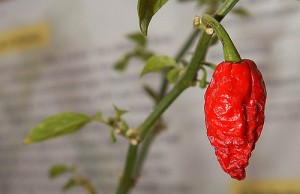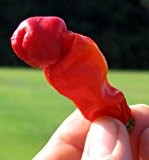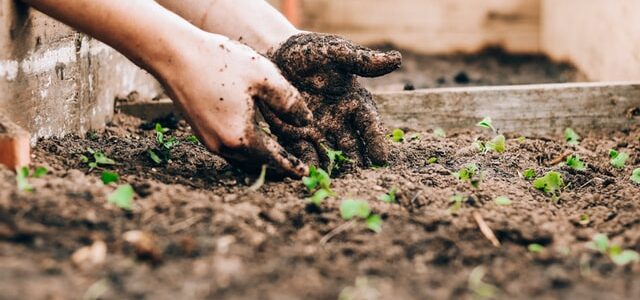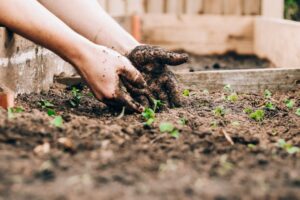Have you ever wondered about the worlds hottest pepper?
Which pepper is it?
How do they measure its heat?
Is it safe to eat?
In this article we have answered all your questions about the world’s hottest pepper.
We’ve also squeezed in tonnes more interesting and useful information on the topic, so you feel totally clued up on this spicy fruit by the end.
Let’s take a closer look at the world’s hottest pepper:
How Is The Worlds Hottest Pepper Measured?
The world’s hottest pepper is measured in the same way as other peppers, which is with the Scoville Scale, which is often written as SHU which stands for Scoville Heat Units.
The higher the number, the hotter the pepper.
This scale was created by a person called Wilbur L Scoville who created something called a Scoville Organoleptic Test in 1912 whilst working for pharmaceutical company Parke-Davis.
This test was used to measure the amount of capsaicin in any peppers that were tested. Capsaicin is a chemical naturally present in peppers with the highest amounts usually found in the seeds and capsaicin glands (pepper innards).
It is capsaicin that gives you the spicy heat on your tongue when you eat a pepper, and that same heat can also be felt on your skin and other parts of your body.
You might already know this if you have ever accidentally touched your eye after touching a hot pepper!
In this instance Mr Scoville was not testing the heat in peppers for the reasons of cooking, but rather for the use of the peppers in a topical ointment that naturally produces heat when applied.
To find out the amount of capsaicin in any pepper he would dilute an alcohol based liquid mixed with the pepper and sugar until the heat was negligible to those testing the mixture.
This method was then equated to Scoville Heat Units EG: a 1500 SHU pepper would mean a person would need to be diluted with 1500 cups of water to not detect any heat in that water any more.
These days, humans don’t need to go through the same tasting method used by Wilbur in order for a chili to have its heat deciphered.
Instead, something called high-performance liquid chromatography (HPLC) is used, which measures the capsaicin levels inside a pepper, but the numbers created are then converted back into Scoville units.
Interestingly, whilst you might expect that the original Scoville test was widely subjective (depending on a person’s tastebuds) but not the HPLC because it is the most up to date measuring tool.
In fact, the HPLC has been questioned in regards to its ability to accurately measure pepper heat.
Some people feel that the way the test is done, and then converted to Scoville units places the heat of the pepper lower than it would be if it was put through the original Scoville testing method.
What Is The Worlds Hottest Pepper?
At the moment the Carolina Reaper, a cross between a bhut jolokia pepper and a red habanero, is the world’s hottest pepper, officially.
It is tested to have 2,200,000 SHU at its maximum – 200 times hotter than a jalapeño pepper. It was officially the hottest in 2013, but lost its crown until being tested in 2018 where it was found to be even hotter.
Originally named HP22B (Higher Power, Pot 22, Plant B), the Carolina Reaper is bred for its heat and was originally made by Ed Currie.
The fruit must be handled with gloves and although the main source of heat is the capsaicin glands in this pepper, you should use gloves when handling any part of the fruit.
The same can be said for any products with Carolina Reaper powder on, like the Paqui Chips original One Chip Challenge chip that featured all over Youtube a few years ago.
Trust me, this is not the kind of chili pepper you ever want to get into your eye.
Are There Hotter Peppers Than The Official Hottest Pepper?
There is a rumour that something called Pepper X, also created by Ed Currie (Carolina Reaper breeder) could be hotter than the Carolina Reaper and therefore could be the world’s hottest pepper.
Currie has suggested that the pepper could be double the heat of a Carolina Reaper, but it has not yet been tested and confirmed by the Guinness World Records team as of 2021.
You can read more about Pepper X here.
Another chili rumoured to be hotter than the Carolina Reaper (but not as hot as Pepper X which is 3.18 million SHU) is Dragons Breath.
Dragon’s Breath chili pepper was tested to be 2.48 million Scoville Units but like Pepper X, remains unconfirmed by the Guinness World Records team.
Is It Safe To Eat The Worlds Hottest Pepper?
There are all kinds of unconfirmed rumours about people eating the world’s hottest pepper – the Carolina Reaper – and getting severe, permanent physical damage from their experience.
Some rumours even suggest that people have passed away after eating it.
None of those rumours have been confirmed, but all add to the hype of the world’s hottest pepper.
If you’re thinking of trying it yourself it is important to be aware of the risks. There has been a confirmed case of a person getting severe headaches for a short time after eating a Carolina Reaper.
At the very least you should be aware that eating this pepper is guaranteed to put your body through stress.
At the very least this means stomach pain, pain in your mouth and throat, sweating and watering eyes (plus a very difficult toilet time the next day).
At the most, it isn’t out of the question for you to suffer heart issues because of the capsaicin content, as detailed by this scientific paper.
Growers have suggested that the pepper is safe to eat (in a limited quantity) but realistically, even if you are in fantastic health you should be aware of the risks of eating the worlds hottest pepper.
The Paqui One Chip Challenge 2021
The original Paqui One Chip challenge featured Carolina Reaper pepper powder on one chip which you eat as a challenge.
It was featured on British TV and on pretty much every influencers channel. It was so popular, in fact, you couldn’t buy one of the chips for a long time because they were sold out and everybody wanted to try it.
The 2021 Paqui One Chip Challenge is even more extreme because it features a chip with the Carolina Reaper powder AND Scorpion pepper powder, the world’s second hottest chili at 1.2 million SHU’s.
It’s even more dangerous than eating the Carolina Reaper alone so proceed with caution.
Will You Try The Carolina Reaper?
Whether you try the Carolina Reaper or not, the fact is that the world’s hottest pepper has made a real impact on popular culture.
If you try it yourself, the chances are it will make a real impact on your tastebuds too!
If you do choose to give the hottest pepper in the world a try, please do consider the risks – this little fruit is not something to be messed with!







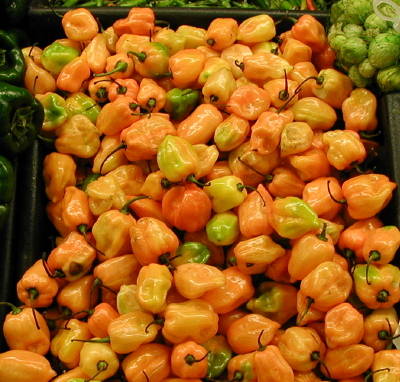

 Morning sun is ideal with slightly moist soil. In tropical regions the Habanero is one growing chilli that can produce all year round. Colder climates the plant will die off in the winter.
Morning sun is ideal with slightly moist soil. In tropical regions the Habanero is one growing chilli that can produce all year round. Colder climates the plant will die off in the winter.


